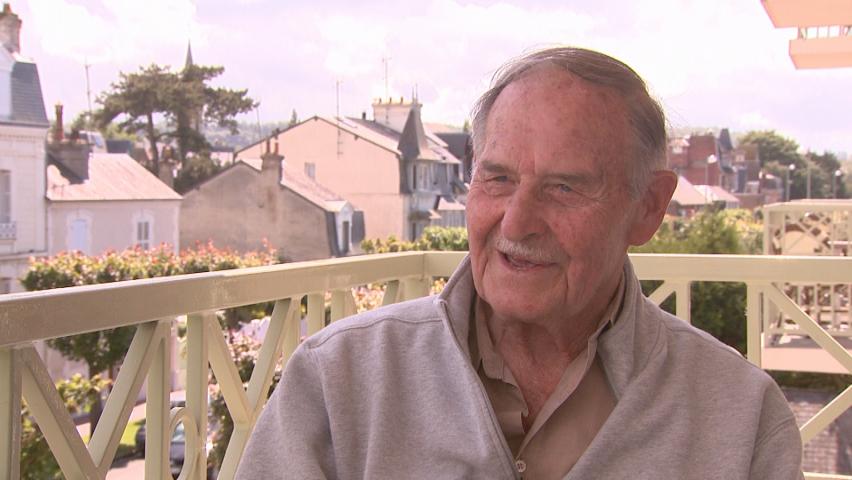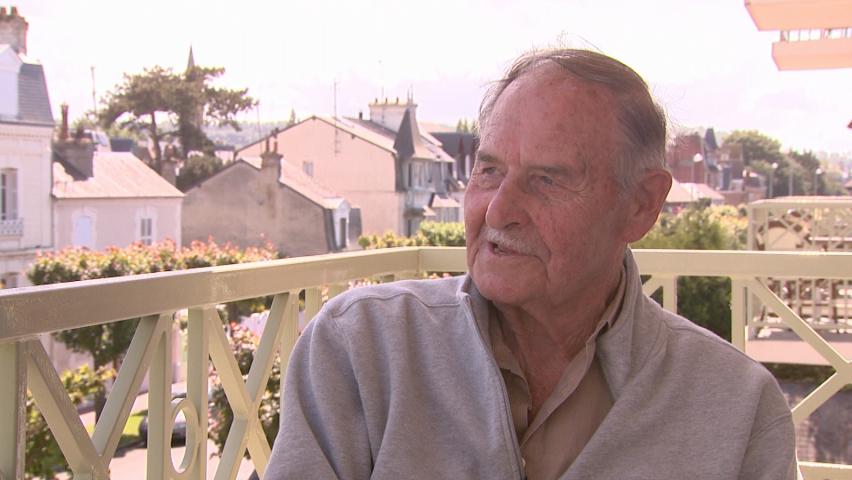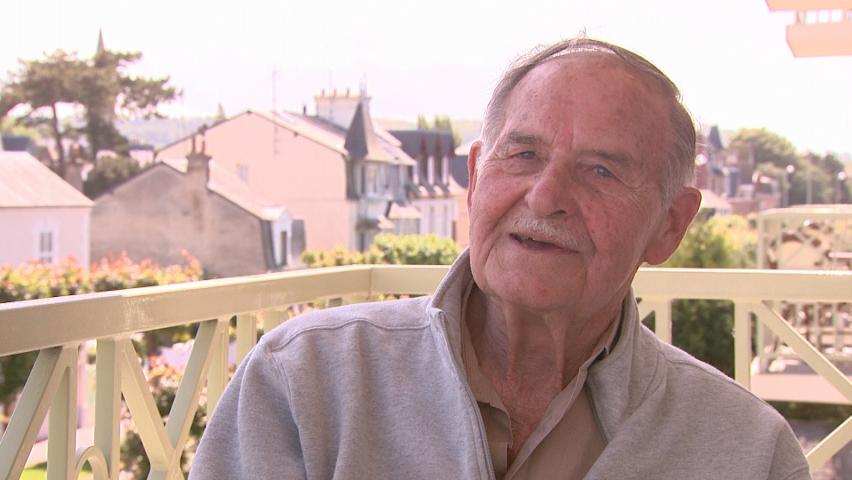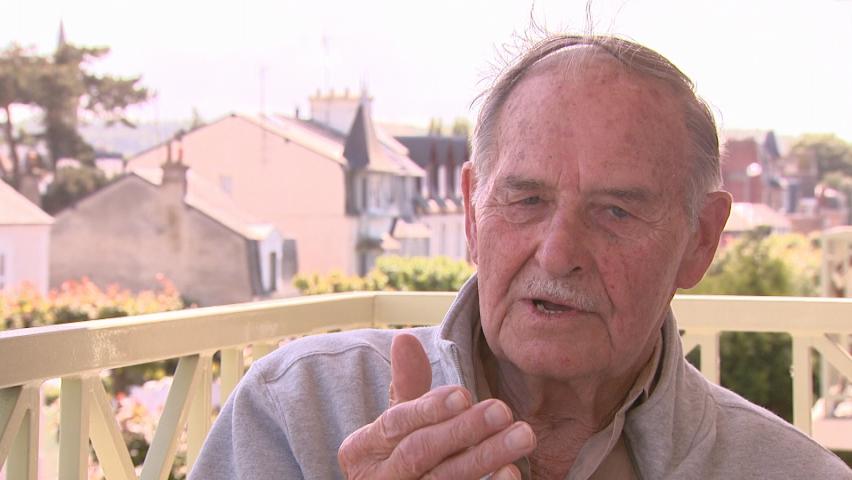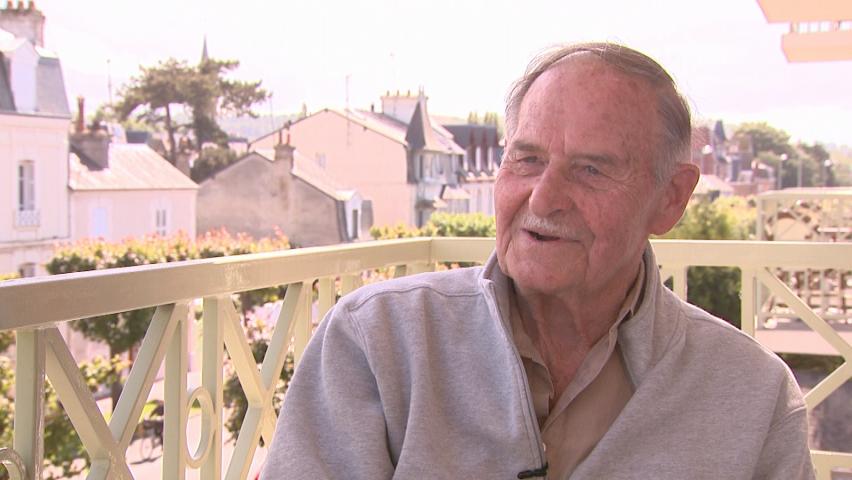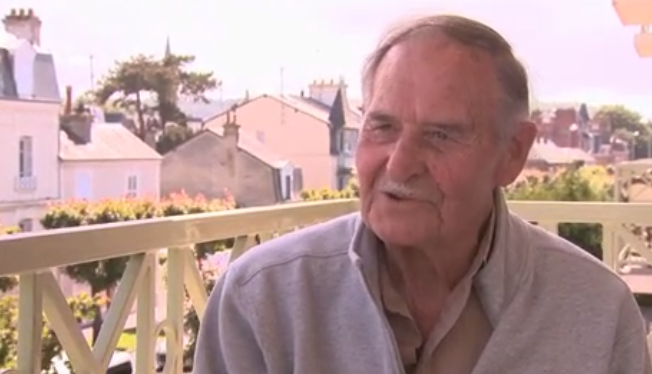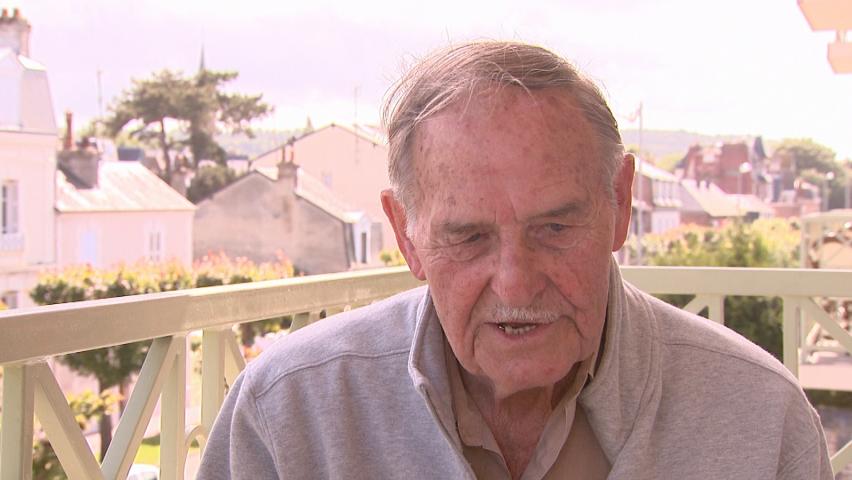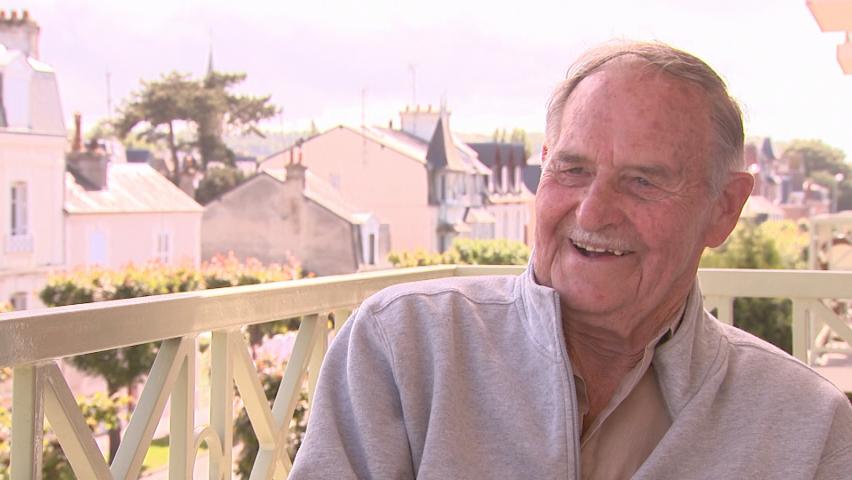Let me tell you about the bombardment.
We had ninety-four self-propelled guns,
each firing a 37 pound shell and during the
run-in for the assault, each of those guns
fired 105 rounds and then when
we got those shells expounded,
we turned aside for the first landing and
the infantry went ashore but before they went
ashore, the Royal Marine Rocket Barrage
pounded those beaches with rockets.
They had what they called a mattress of rockets
mounted on barges and I was always very
happy when I’d see those things in training
that I wasn’t going to be exposed to
those terrible explosions.
That was a massive bombardment and
right on the heels of that our infantry and
our artillery observers landed and
that’s where the 7th Brigade went in
on the right, right here at Courseulles,
the 8th Brigade landed at Bernières and
St. Aubin just down a little but our
bombardment started about a half an hour
after the British one on our left cause the
British 3rd Division, the tide had
uncovered their obstacles before ours so
they had a half an hour difference in the tide
and we could hear their gunfire
before ours started.
We had three divisions, the 3rd British,
the 3rd Canadian and the 50th British Division
made that attack and on, as I told you before
on all three British beaches we had
complete success and breakthrough.
Some of them didn’t but ours was, ya…
Many times I used to read that previous
battles the men weren’t briefed
enough on what to expect.
We were briefed.
Before this attack we were told in
detail that we were going to attack the
coast of Normandy on the 5th or 6th of June.
The objective was to set up a bridgehead
so we could build up an army in France and
we might have to accept
fifty percent casualties, that was the
unfortunate word, fifty percent.
The 51st Division was already afloat and
it was going to relieve us after three days if
we had too many casualties.
We didn’t need relief so we kept on fighting.
And the 3rd Division wasn’t pulled out of the line
until all through the Battle of Normandy
it kept on until the 2nd and 4th joined
us and then but the 3rd Div fought constantly
until we wore our guns out and
then they pulled us out to change the guns.
I hate to think what would have happened
if we had had fifty percent casualties but
I can see some of those big battalions,
now I wish you could see them here.
Oh, they were in great shape.
We all were, ya!



